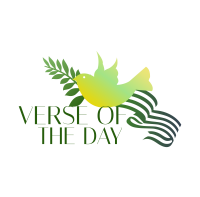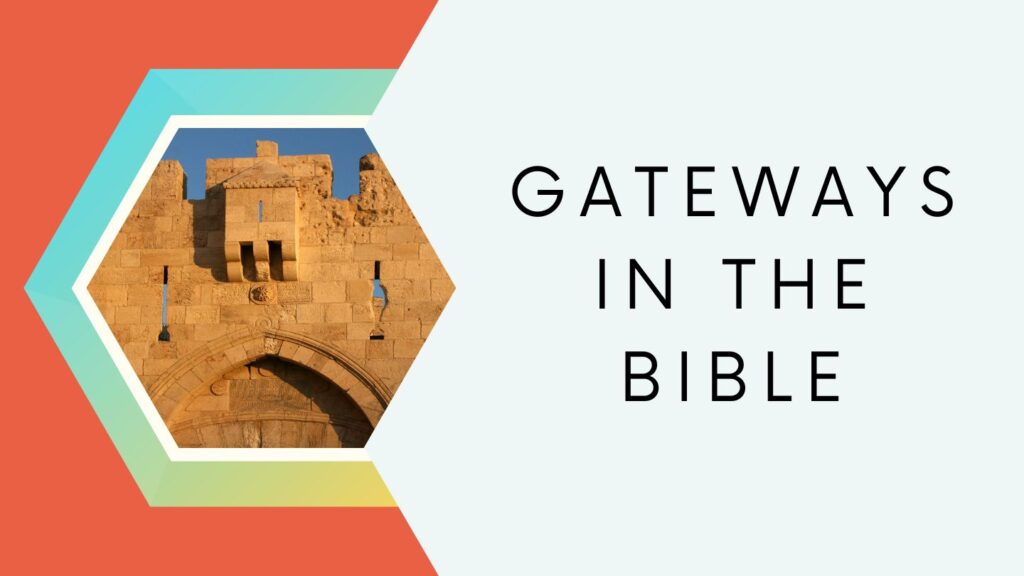
Several gateways are found in the Bible, from the Upper gate in the house of Jehovah, to the Corner gate, to the Beautiful gate, and to the Sheep gate. These gates are all beautiful and unique in their own way. They represent many different aspects of the Bible and are used as illustrations to help readers understand certain concepts.
What Does a Gate Symbolize in the Bible?
Throughout the Bible, a gate symbolizes many things. It is a doorway, a passageway, and a place of refuge. In many cases, a gate is also used as a symbolic representation of Christ or other spiritual entities. There are several types of gates, including those related to Heaven, the temple, and the city of Jerusalem. The gates of the temple are mentioned in the book of Exodus, the book of Numbers, and the book of Jeremiah. Gates were a common feature of the lives of people in the ancient world. Typically, a gate is guarded by an animal, such as a lion, bull, or dragon. It is also sometimes guarded by a tower. Gates are also associated with mercy, justice, and righteousness.
In the Old Testament, there are many different types of gates. Gateways in the Bible were passageway that served as an entrance to a city or other important place. A city gate was usually large and imposing. In some cases, it was locked with a wooden bar. In other cases, it was made of metal. Gates were usually open during the day, but were closed at night. During the day, priests would offer morning and evening burnt offerings. They also offered peace offerings and general ministry.
The gates of a city were a critical part of the city’s defense. A besieger would make the strongest effort to reach the city gates. Gates were usually made of wood, with a metal bar or ring fitted into the clamps of the doors. A tower, which usually topped overhanging projections, was used to provide security to the city’s gate. In the days of the apostles, gates were made of iron. Gates were also said to have doors made of copper. They were closed at night to prevent robbers from entering the city.
The gates of a city were also used for public deliberation and the administration of Justice. Sometimes, gates were used as a place of audience for kings. In fact, in Nehemiah 12:39, the city of Jerusalem is said to have a Prison Gate. It is also mentioned in the book of Zechariah.
A city gate was often the main entrance for the city, and it played an important role in the public economy. The area between the two gates was also used as a marketplace and town hall. In some cases, the space was a spacious courtyard. In other cases, it was a narrow corridor with recessed guardrooms.
The temple was similar to a city in that it was surrounded by walls and a large building. The temple was a large place, and gates were placed at major entrances. The first gate was known as the Old Gate. The gate was about 50 cubits wide and 25 cubits long. The other gates were about 31 cubits wide and 24-27 cubits long. The inner gate was used as a second line of defense. The gateposts were usually of the same size on both sides of the gate.
Upper gate of the house of Jehovah
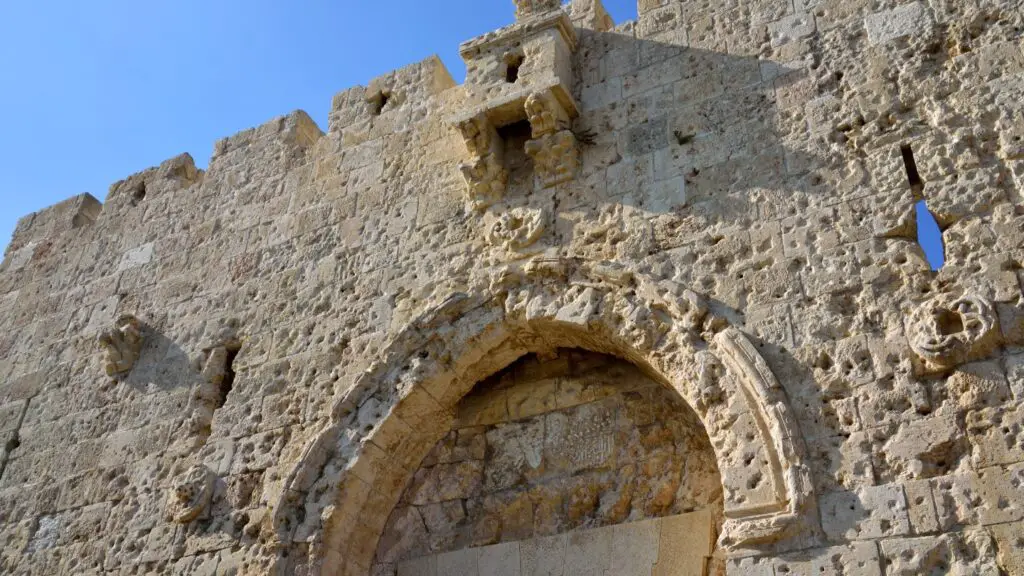
During the reign of Jotham, the house of Jehovah had an upper gate. It was made by Jotham himself, and was in the hill-country of Judah. He was twenty-five years old when he began to rule. He did not enter the temple of the LORD, but built castles in the hills and forests of Judah. He also established cities throughout the hill-country of Judah. Despite the fact that Jotham did not enter the house of Jehovah, he was a good man in the eyes of the LORD.
The house of Jehovah stood to the west of the court of the priests. There was a stairway of twelve steps, and an altar on the east. The altar was twenty cubits in length and ten cubits in height. It was covered with gold plates. The brazen altar of holocausts stood to the east, and an altar of incense stood to the north. The altar of incense was a rectangular, square chest of cedar wood. It was fitted with a veil, and hid flowers which could be carved.
The house of God was divided into two chambers, unequal in size. The second was called godesh haggodashim, which means the Holy of Holies. The second hall was lined with colocinths and had two doorways. The entrance to the Holy of Holies was made with a pentagonal-shaped gate. The walls were lined with flowers carved in relief.
The gate was made of cedar boards. It was flanked by square-shaped pillars. It had a vestibule on the north, and was accessed by an incline facing east. The doorkeepers kept the unclean out of the house of Jehovah. The doorkeepers also guarded the doors.
The court was a rectangle with a distance of 187 cubits on the north, east, and south sides. The court was paved with stone slabs, and had an incline on the east side. There were three doorways. It was also surrounded by a stone parapet called soreg.
The house of Jehovah was equipped with cypress wood doors. The doors were hinged, and the leaves of the doors were folded. The walls were lined with flowers in relief, and the floor was covered with chains of gold. The house of Jehovah was surrounded by Levitical priests who offered burnt offerings to the LORD. The law of Moses was also followed in the house of Jehovah.
Corner gate
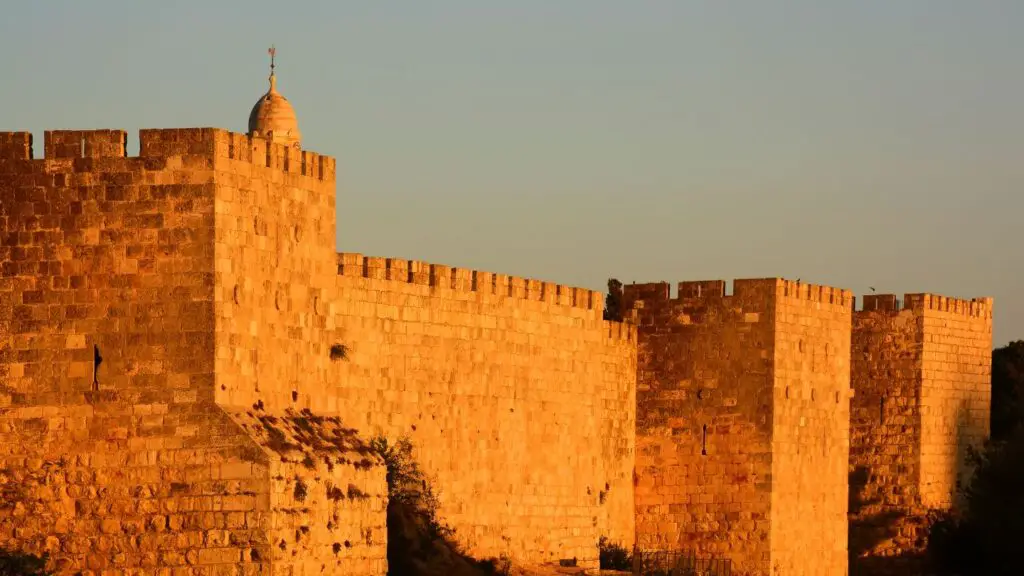
Located west of the horse and dung gates, the corner gate was a grand architectural achievement. It was one of the ten gates outlined in the book of Nehemiah, which also included the Dung Gate and the Horse and dung gates. It was also one of the largest buildings in Jerusalem, and one of the largest buildings in all of Israel. It was the centerpiece of a city that was to be built to honor God.
There are actually many other gates of Jerusalem, but the horse and dung gates are not the only ones. Some of the smaller gates are hidden from view, preventing excavation to the fullest. However, the Corner Gate in Jerusalem is a fairly well-known landmark, which is why it was chosen as the cornerstone of the city. A few hundred years ago, it was the location of the king’s winepresses and the home of the city’s spies. Today, the area is dominated by the wall of Jerusalem, which prevents the excavation of the ruins.
One of the best parts of the book of Nehemiah is its discussion of the various buildings, as well as the ten gates of Jerusalem. As far as the Bible is concerned, the horse and dung gates are the relics of the past. However, the Corner Gate was not an original feature of the city, as it was part of the boundary of a sacred area that was reconstructed for God. The most important part of the book is the information it encapsulates about the city’s founding, history, and future.
The name Meshullam appears in the Bible twenty-one times, including an appearance in the book of Ezra. The most famous Meshullam in the Bible was Meshullam son of Besodiah, who was responsible for the construction of the walls of Jerusalem. He was also responsible for the building of the fabled Gate of the fountain, which is also listed in the book of Ezra, as well as the Gate of the dung, which was a predecessor of the Horse and dung gates.
The most important part of the book of Nehemiah is the information it encapsulates about a city that was to be built to honour God. Currently, the city of Jerusalem stands as one of the largest cities in Israel, with a population of approximately 2 million. It is a city that has undergone many changes and repercussions.
Beautiful gate
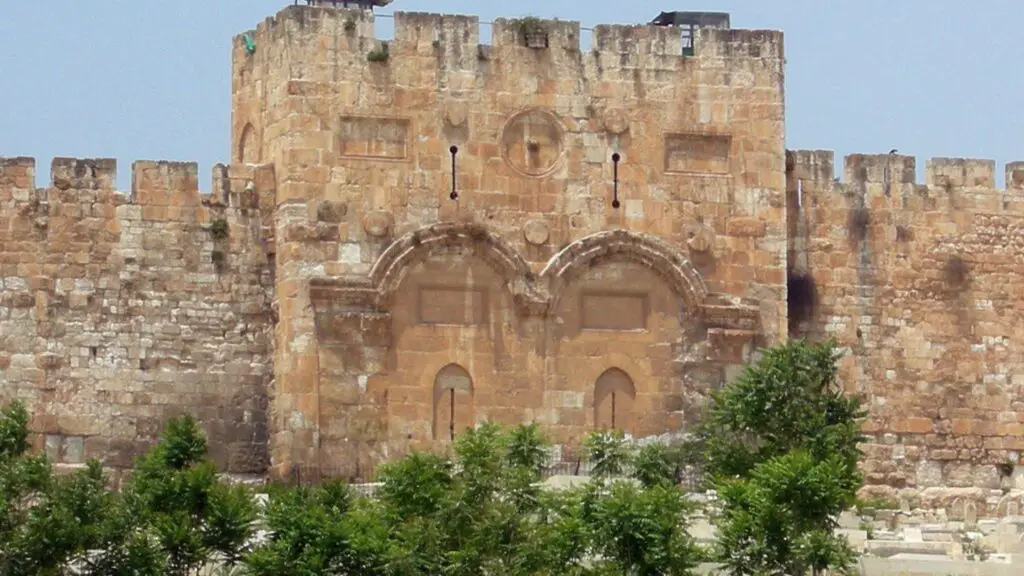
Among the many questions asked by historians and scholars, one of the most often asked is, what was the Beautiful Gate of the Temple? Despite its name, there is little agreement as to the exact location or name.
One of the most interesting aspects of this gate was the elaborate interior design, which featured two enormous domes covered with elaborate designs. These designs amounted to the best of their kind in the ancient world. The names of the 12 tribes of Israel were carved into the gates.
The gate had a hefty 60 foot footprint. It was located on the east side of the Temple Mount. It was the main entrance into the Temple Mount and served as the gateway to the Temple. It also had a sculptured relief of Susa.
Another interesting gate was the Nicanor Gate, which was situated between the Temple and the court of the women. This was a beautiful looking gate, which Josephus described as a Corinthian gate.
In terms of size, the Nicanor Gate was a little smaller than the Golden Gate of the Old City. It was a Corinthian gate that was made of bronze. In terms of design, it was an elaborate design, which featured geometric and floral patterns.
Another gate on the eastern side of the Temple complex was the Eastern Gate. This was a triple portal that served as the entrance to the Temple. It required twenty men to open. It was a corinthian gate that featured elaborate interior decoration.
This gate was the most impressive of the bunch, especially for the illiterate. It was an impressive structure, which had a staircase to reach it. The staircase was made of numerous stones that date to the first century. It had a doorjamb located at the bottom of the far left portal.
The name of this gate might be the “Beautiful Gate,” which is ironic, as the name is not entirely accurate. It is also the most impressive of the gates that existed in the city of Jerusalem. It is also the gate that the Bible claims is the most impressive of its kind.
Sheep Gate
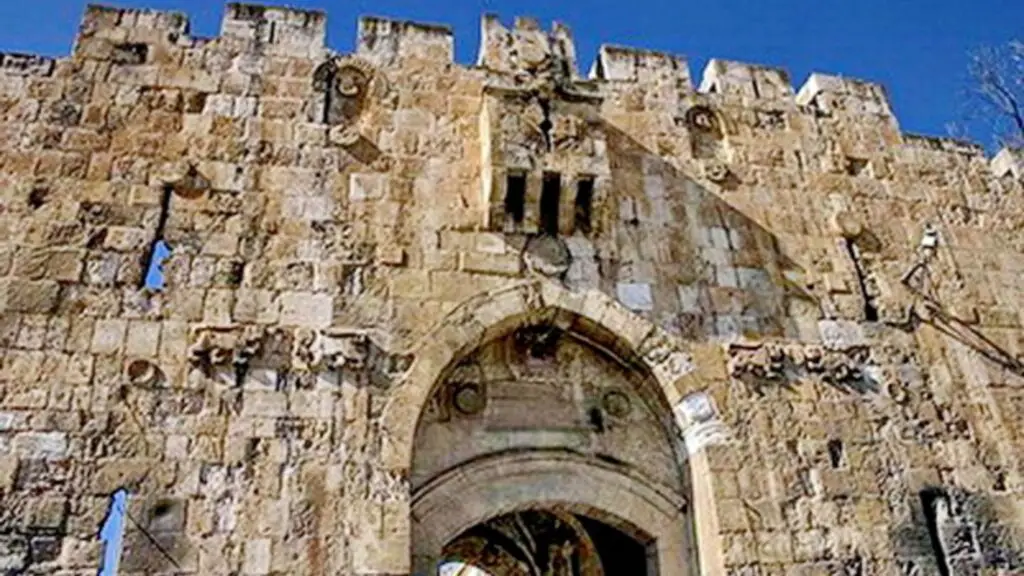
During the rebuilding of Jerusalem by Nehemiah, the Sheep gate served as the starting point. The gate was located in the eastern wall of the city. It was near Bab el Kattanin. The Sheep gate served as the gate for the sheep market.
The Bible mentions the Sheep gate at the beginning and end of Nehemiah. The name comes from the frieze that is placed over the gate. Its four lions are actually panthers. It is the only gate left from the five gates that were once there.
A person who was a respectable person would relocate a sick person or a lame person. They would also make sure that the society was clean and free of impure things. The people that were shameful would have to be sacrificed for the good of the society.
The sheep gate in the Bible was a place where the sacrificial animals were brought in. The high priest consecrated the gate. It was also the gate through which the sheep went into the temple compound.
The high priest, Eliashib, built the gate. He was a priest, a descendant of David in Judah after the return from Babylon. The Hebrew name for Eliashib is God repays. It also means that God restores.
The name Sheep Gate comes from the idea that the gate was a way for the sheep to enter the Temple compound. Sheep were brought in by a gate, and then led into an enclosure at sundown.
A shepherd would lie down in front of the pen entrance to protect the sheep. A watchman would only let certain shepherds in. Anyone climbing over the wall into the pen was a robber.
The pool near the Sheep Gate in Jerusalem is known as the Pool of Bethesda. It is located in the northeast corner of the city near the temple. It was believed that it restored the health of the sick. It is also called the house of mercy.
A person who believes in Jesus Christ is saved from sin and death. He is the New Covenant High Priest.
Scripture Verses About Gateways in the Bible
David supplied a large amount of iron to make the nails for the gateway doors and fittings, as well as an incalculable amount of bronze. — 1 Chronicles 22:3
Hezekiah established priestly divisions and Levite divisions, each according to their service duties, with both priests and Levites offering morning and evening burnt offerings, peace offerings, general ministry, thanksgiving, and praise in the gateways to the LORD’s campgrounds. — 2 Chronicles 31:2
Raise a signal on a bare hill, raise your voice to them, wave [your] hand, and may they enter the noblemen’s gateways. — Isaiah 13:2
The pavement (that is, the lower pavement) ran along the side of the gates and corresponded to their length. — Ezekiel 40:18
The gate and its porches had windows all around, just like the other gateways windows; the length was fifty cubits and the width was twenty-five cubits. — Ezekiel 40:25
The man (angel) then led me to the inner courtyard by the south gate, where he measured the south gate using the same measurements. — Ezekiel 40:28
